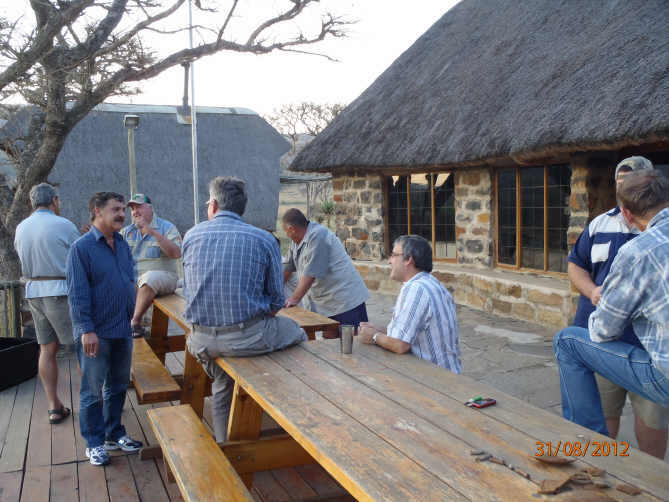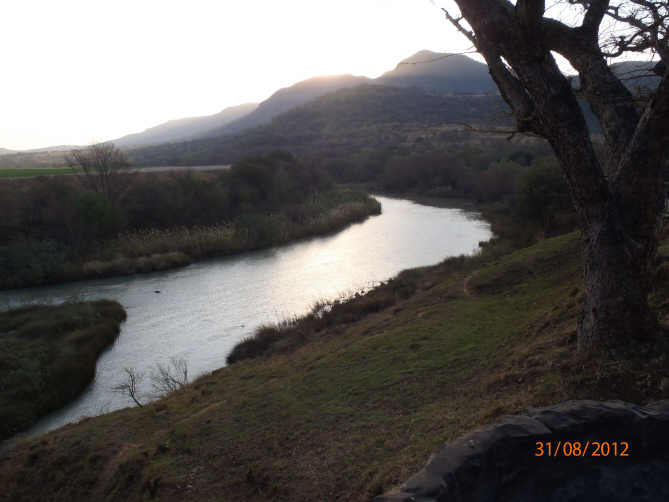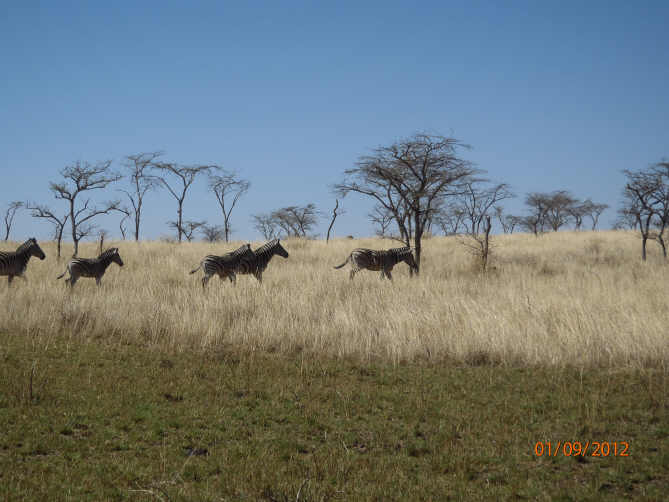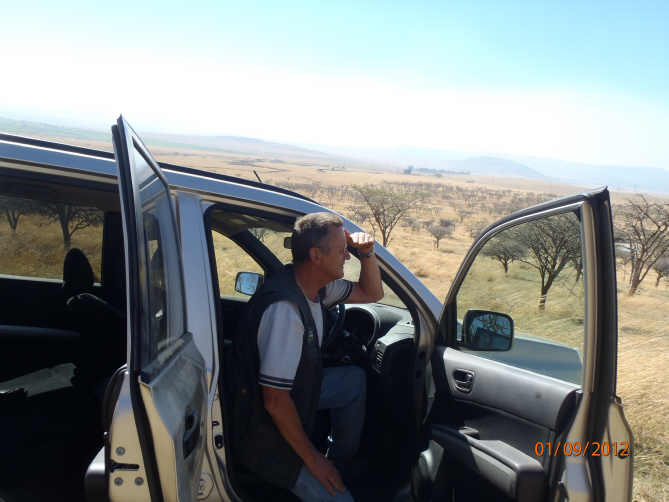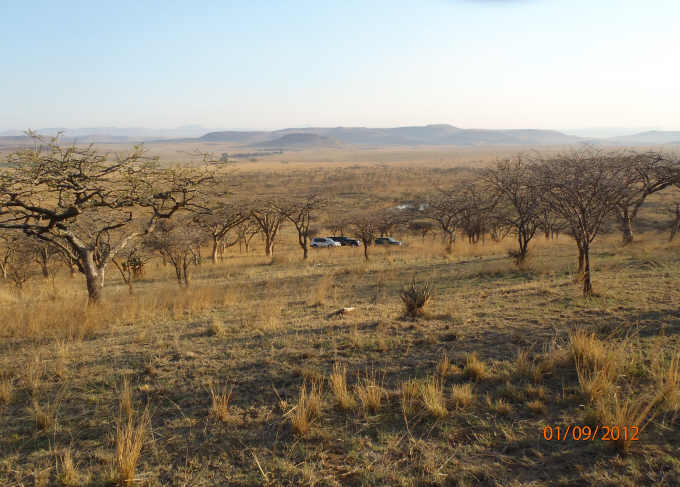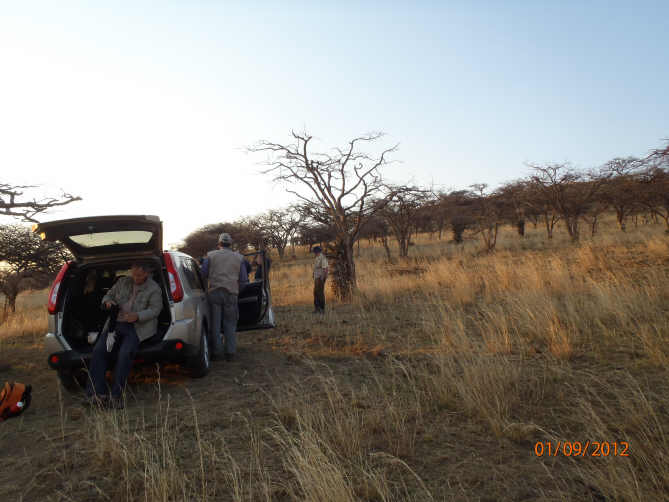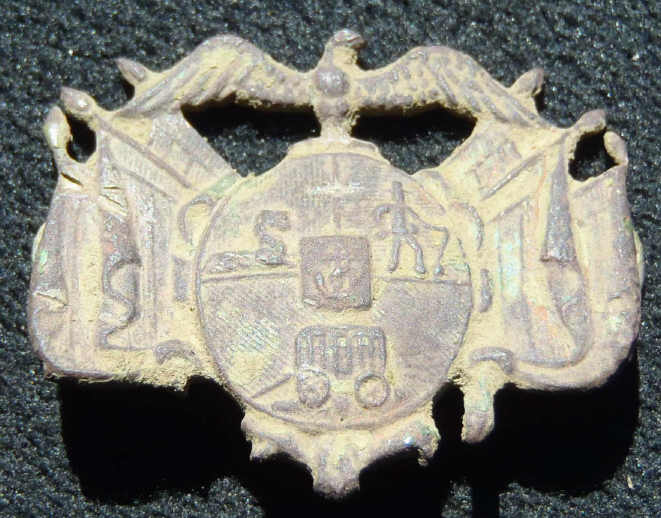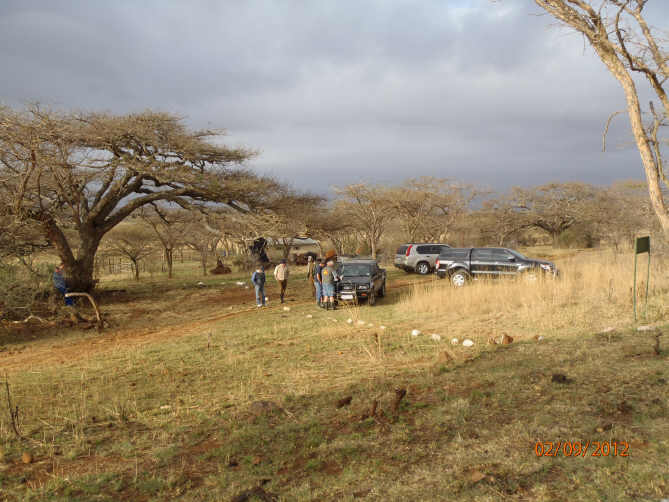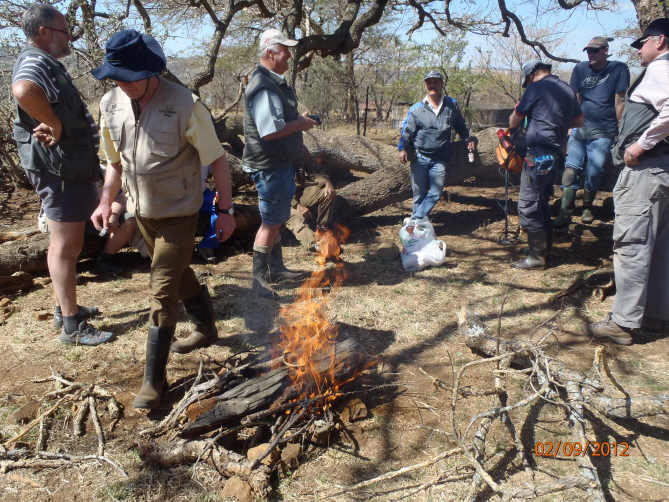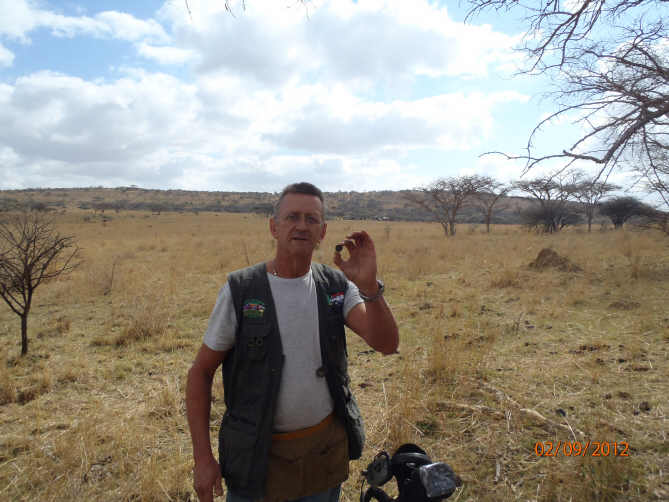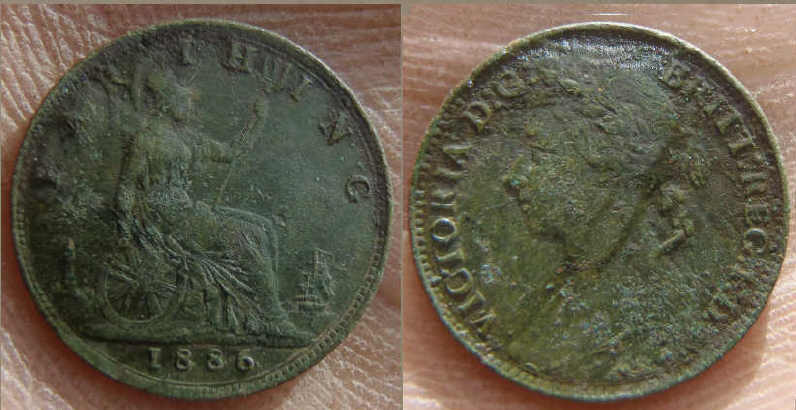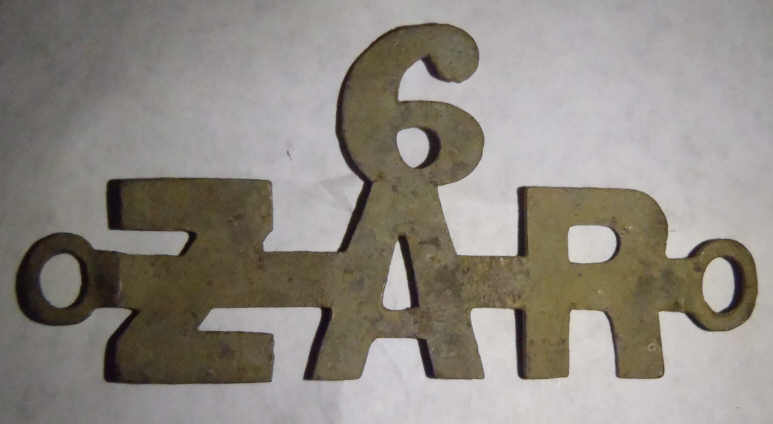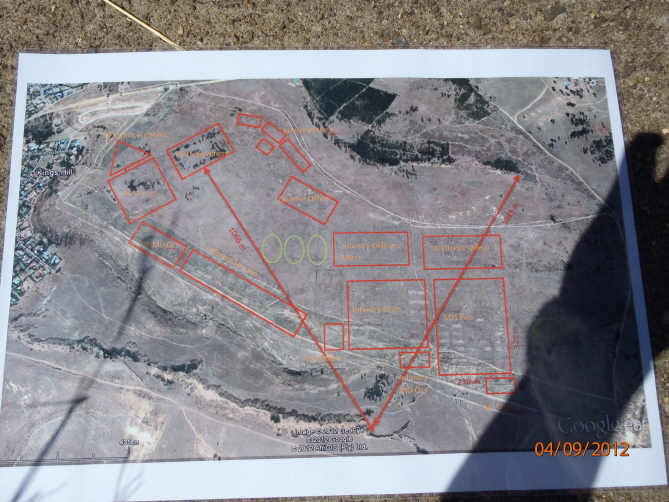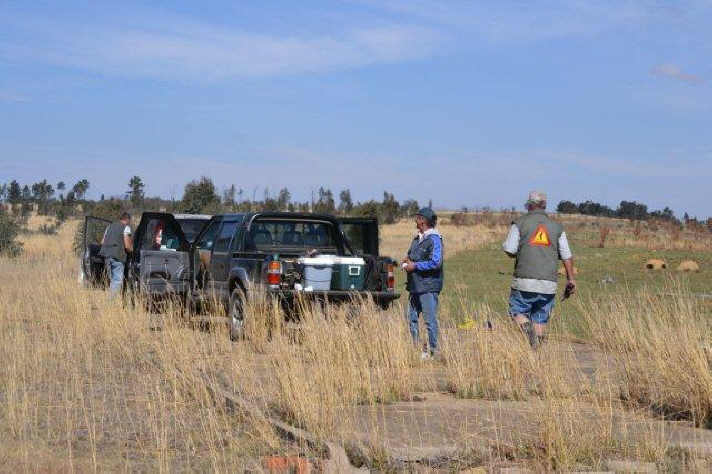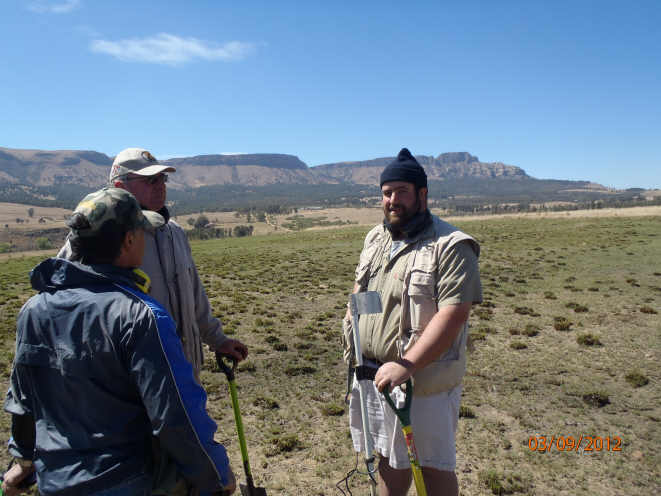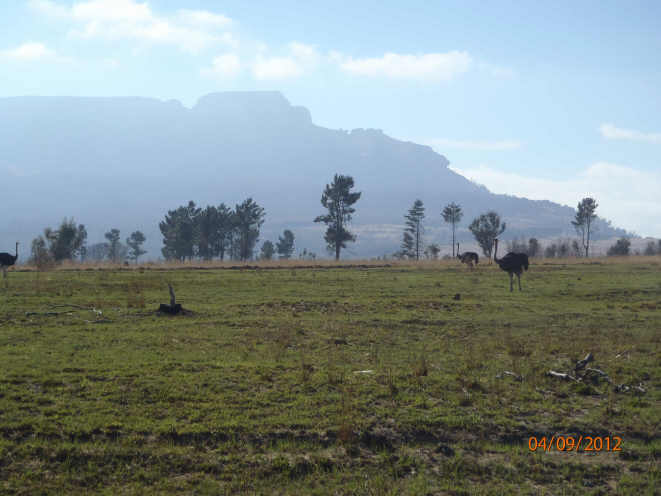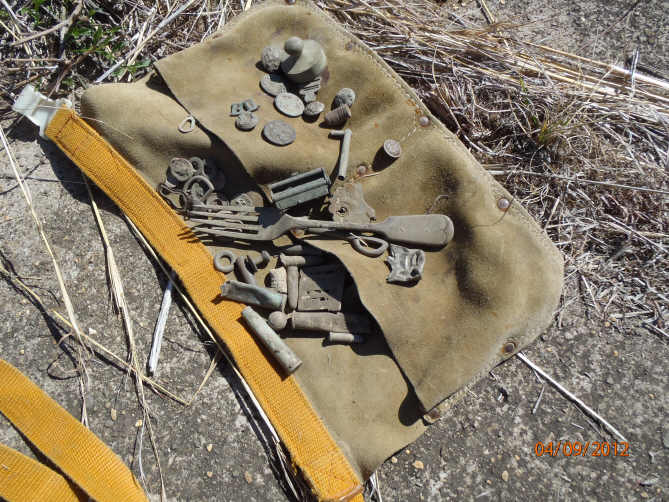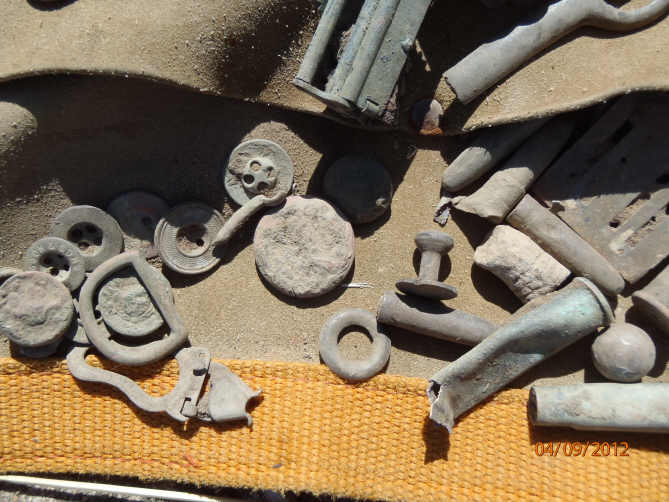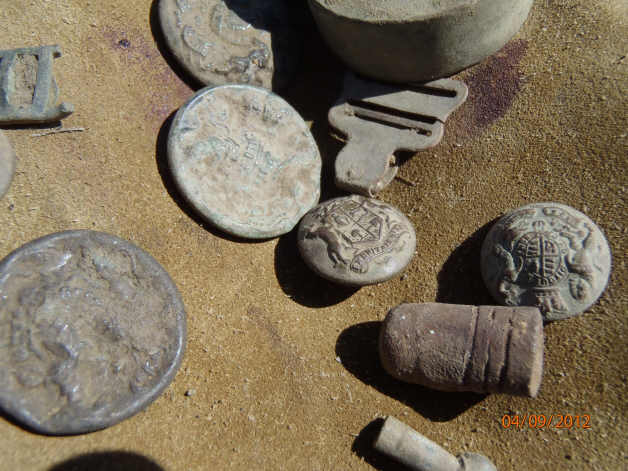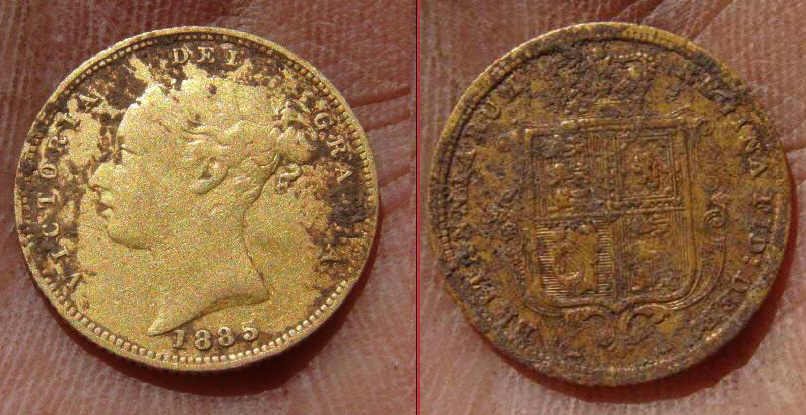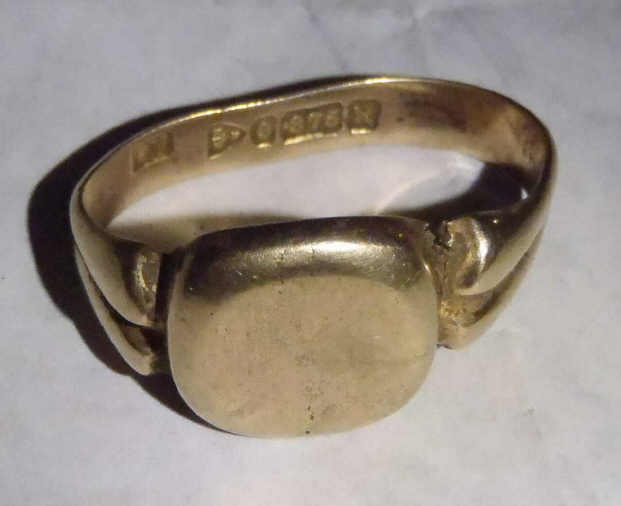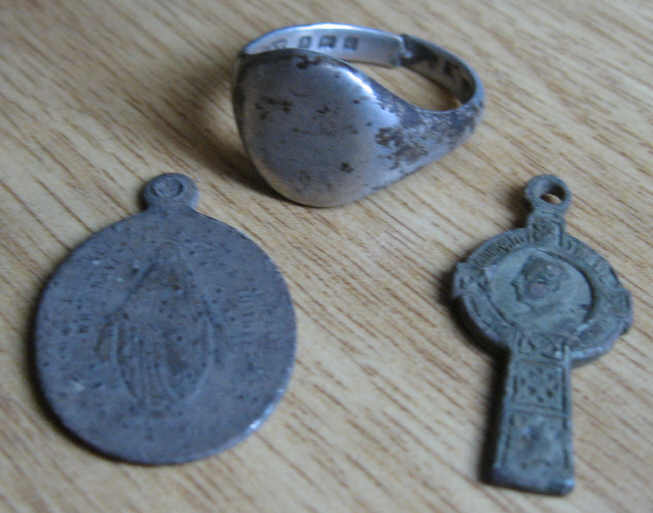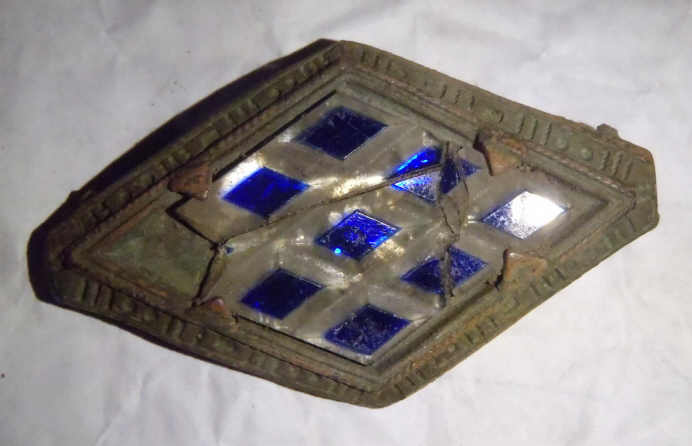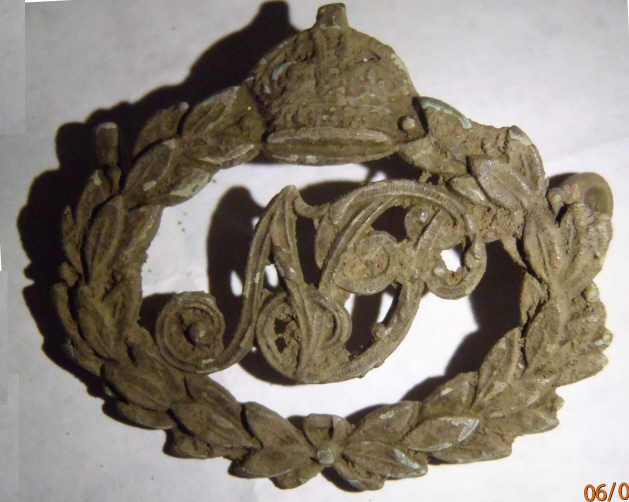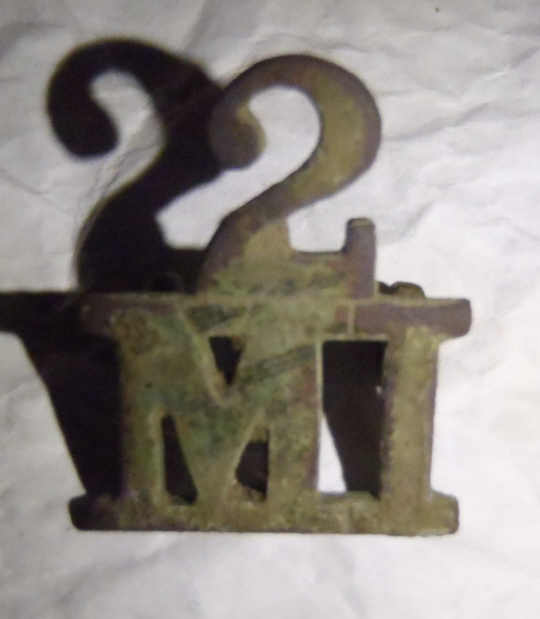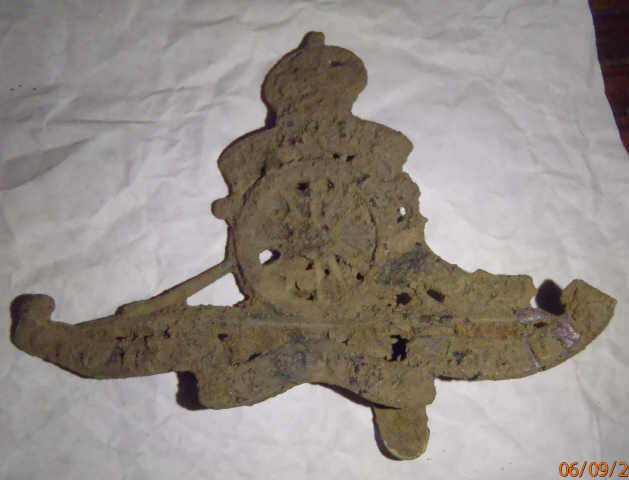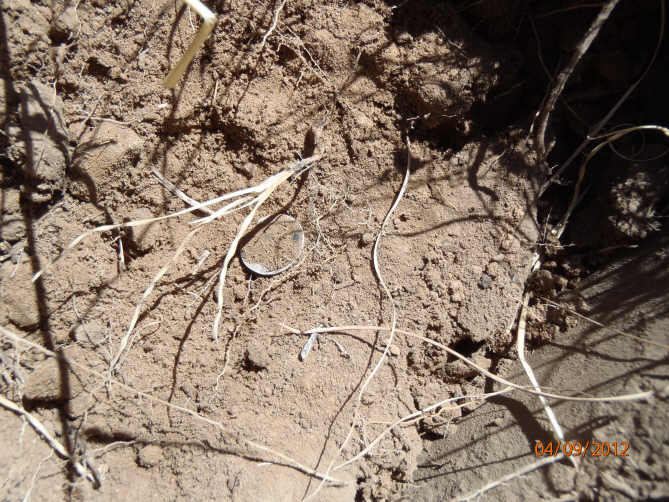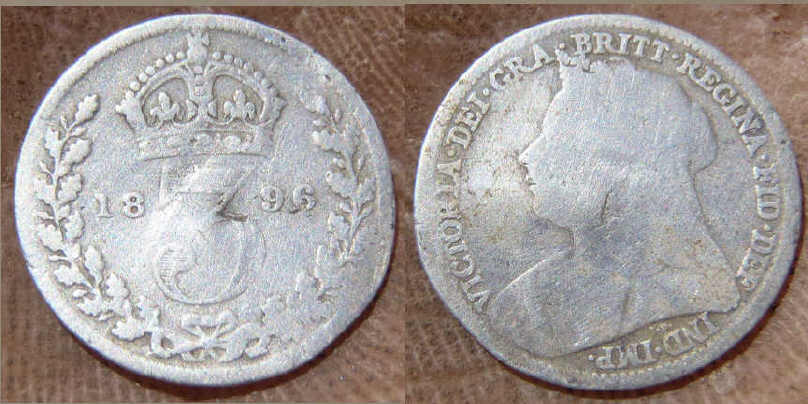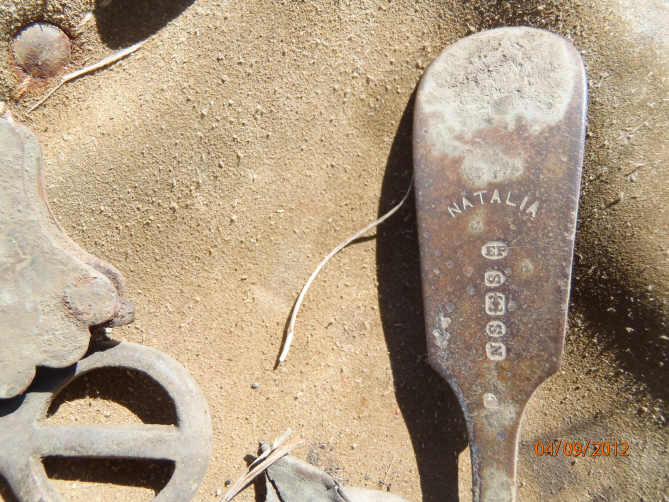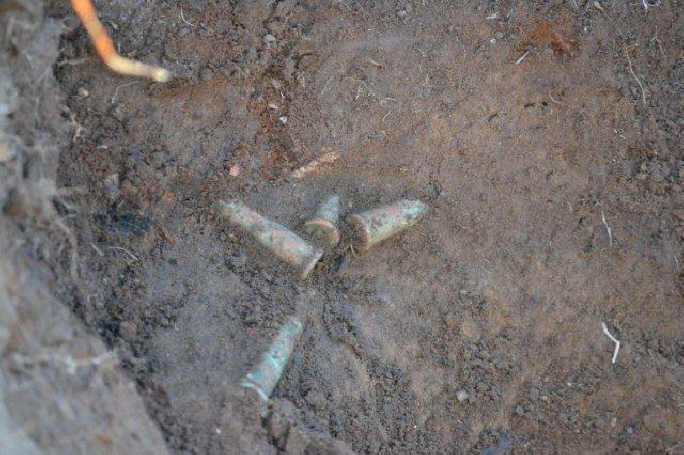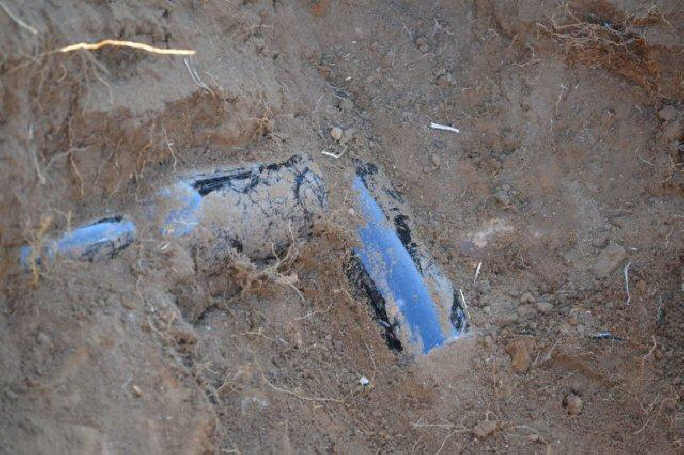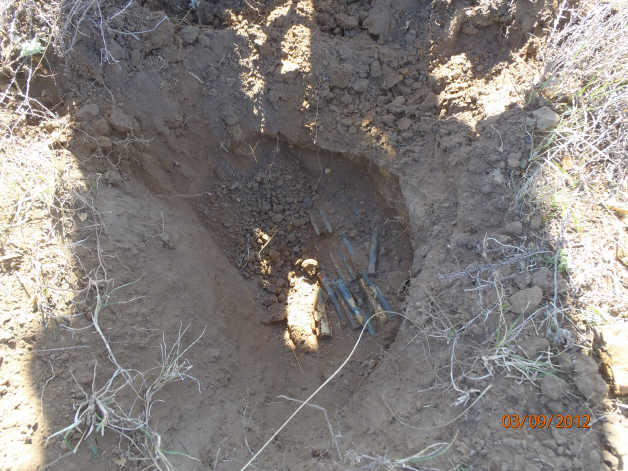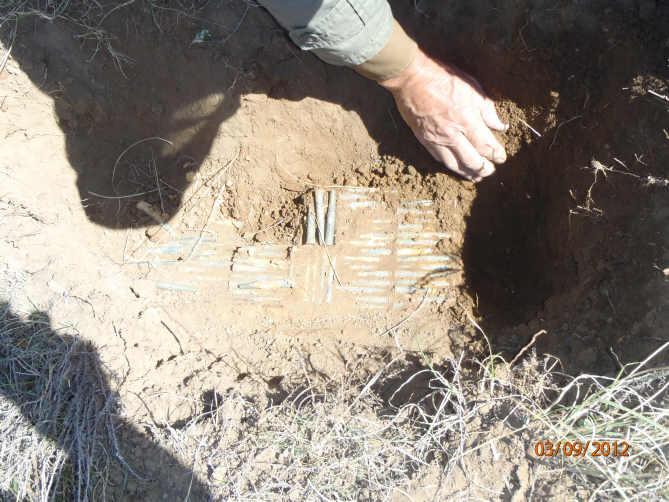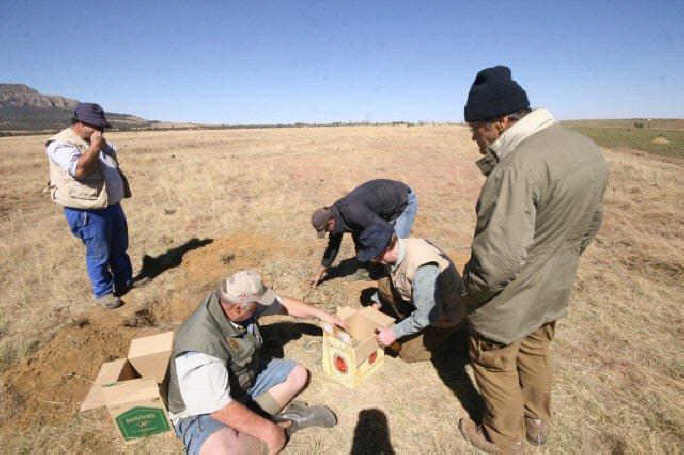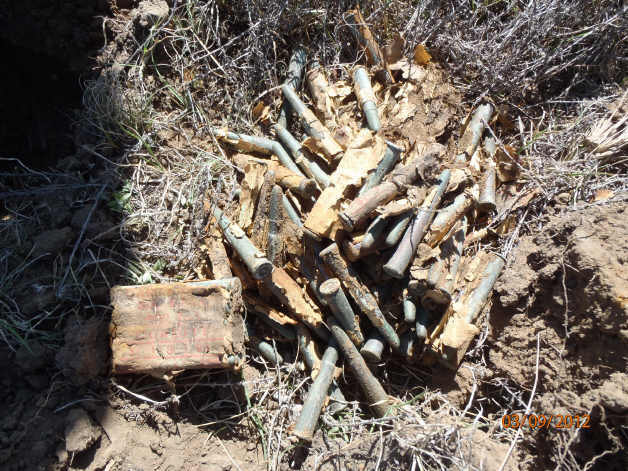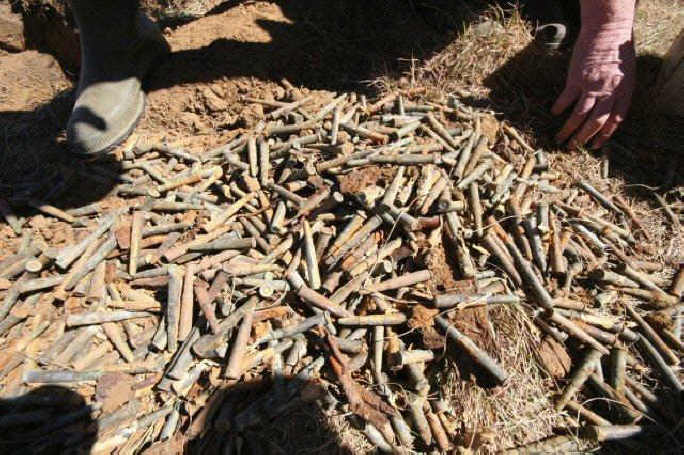Tugela River 2012: Day 1 & 2
This is my account of the Boer War hunt we had recently on some Anglo Boer War (1899-1902) battlefields and camps near Ladysmith, Natal in South Africa.
We were approx 13 hunters and a film crew of 2 also joined us to make a documentary film of the hunt.
The guys from Cape Town were Wolf, Pierre & John. From the Eastern Cape came Lukas (who organized everything) and Simon from Queenstown. Mike, Tinus and Dave are from Natal and from Gauteng (Johannesburg) came Tonie, Eugene, Danie and Stefan. The chefs who made our food at the Tugela Bush Lodge where we stayed for the 7 days were Hennie and Lee-Anne. The film crew were Bertus and Jaco.
Representing the opposite side (England) was Gerry (Dino), who made this his third visit to these sites.
The first two pictures shows the guys meeting each other the first day at the lodge and a view from the lodge towards Spioenkop (in English called "Spy Hill")
Spioenkop is the highest hill in the picture and this is where one of the first important battles between the two countries took place. The English were badly beaten here and more that 200 were buried in the trenches on top where they died. These are all clearly marked and many people still visit the area today which is maintained by the Military.
The river is the Tugela, which became a thorn in the side of the British as they found it difficult to cross. The Boers kept preventing a crossing with deadly rifle fire!
The first day we went to visit the site of the battle of Spioenkop that was fought on the 23rd and 24th of January 1900.
The Battle of Spioenkop was the scene of the most futile and certainly the bloodiest of the four battles fought to relieve the besieged town of Ladysmith from the surrounding Boer forces.
Here are some pictures from the first day:
The surrounding area is a game park at present and there is lots to see even Giraffe and Rhino.
This is Gerry, our friend from England. He is making sure it is safe to get out as we have told him to watch out for the "Lions".
The African bush at its best!!!
Getting ready for a day's digging as the sun comes up
The best find of the first day was this badge by John. It shows the coat of arms of the ZAR (South African Republic) and was probably worn by a Boer on the side of his hat. Many other finds were made that first day including a piece of a huge bomb found by Simon. The area is still littered with bomb fragments, bullet points and cartridge cases. There were not however many personal pieces which was disappointing.
The badge is truly a "wow" find. It is still in good condition and extremely rare. The same "coat of arms" was stamped on the one side of most of their coins as well including the Penny and Half Crown which was the same size and had the same value as British coins of the time.
This was the first "Find of the Day" and received our first prize.
I have a few of these coins in my collection.
The second day we went to Spearmans where an old hospital stood during the war. There is a small British graveyard nearby. Most of the graves are related to the battle of Spioenkop and are those of soldiers who died from wounds sustained during the hostilities.
We had a lovely bush barbeque in the field after the hunt was over.
Here are a few pictures of the second day:
The gang getting ready to detect
This is how we do "lunch" in the bush after spending time digging. We make a fire and then put meat on a grid and "braai" (flame grill it) and eat it with brown bread!!!
The camp at Spearmans consisted of about 20,000 troops and gear and they stayed there for 9 days after the defeat at Spioenkop. General Buller then moved on to Colenso to try to cross the Tugela there.
The British artillery pounded Spioenkop from Spearment before and during the battle but again we did not find enough personal goods there to make us stay long as well. We had hoped to do better there.
Some of the better finds on the second day was an 1886 British Farthing (found by Gerry). To us this is a great find as we relate it to the War.
The badge was found by me and is an exceptional find in that it refers to the Transvaal Republic history after the war. ZAR stands for South African Riders 6th Group. The Boers and their horses were as one and were divided into groups when needed in time of need.
How the badge ended up in Natal at Spearmans is anyone's guess. It was however the "Find of the Day" and I am delighted with it.
British Camp at Harrismith: Day 3 & 4
On the third and fourth day of our hunt we visited an old British camp at Harrismith that we have hunted before in 2006 and 2008.
The old camp site is a massive place and is currently the botanical gardens of Harrismith. During the Anglo Boer War some 20000 soldiers and 33000 horses were stationed there.
The camp did not close down when the war ended in 1902 but carried on for another decade and was finally closed down just before the start of the First World War.
An old map showed us the location of the different units during the Anglo Boer War (Infantry, artillery etc), officers' and married quarters, post office, sport fields, jail houses, etc.
The following pic shows a modern Arial picture with the red markings superimposing the old locations according to the old map.
As this is an important site that we visit as often as possible the map has enabled us to concentrate on selective searching of areas that could be productive.
In previous years great finds were made here including a solid gold sporting medal, sterling silver temperance medal, many badges, coins, etc.
This year was probably the best year of them all and fabulous finds were made in the camp including an 1885 British Gold Half Sovereign and a Gold signet ring (hallmarked for Chester 1901) that were both found by Mike Conradie within half an hour after each other.
Other great finds were a Sterling Silver men's ring with a Birmingham hallmark for 1902 found by John, a 1873 Young Head Victorian Shilling found by Dave, a Natal Police badge found by Wolf, a Mounted Infantry badge found by Tonie, a Natalia marked spoon and 1896 Silver 3-penny found by Gerry, an enormous hoard of bullets in their original wrappings found by Dave and a stunning Bed Plate for Private W Lock of the Army Service Core. Jewellery pieces were found as well as old canteen tokens (very rare items).
Many coins were found spanning the period from the 1870s to the early 1900s. Pierre found a Victorian tickey dated 1912 that was issued a year before the camp closed down!
Mike and Tinus also found an old ash dump where many bottles and ceramic items were dug out.
Here are some pictures of day 3 and 4 at the camp:
This camp went on after the war till 1912 when it was offered to the Harrysmith municipality by the British Military. They however declined and pleaded poverty. The British then decided to demolish the entire camp by blowing it up!!!
The cars and some of us are standing on a stable foundation which is all that was left after the British had left.
Spot the ostriches in the following picture!
We were fortunate in that the grass had been burned making it easier for us to swing the coils!!!!
These two pictures show what we find after 100 years. This is how our displays in the museum come about.
The following picture shows the uncleaned 1885 Gold Half Sovereign ("Young Head") found by Mike and the picture following that the gold ring he found half an hour later near the spot where he found the gold coin! I searched the site the next day and found a 1901 Penny there.
John found this silver ring of 1902 two minutes after we started detecting on the first day at the camp. It was his second signal. The pendants were found at the same spot (the map showed us that it was the married quarters in the old days when officers could have their wives stay with them at large camps like these).
The following pendant was found by Stefan:
Badge of the Natal Police. These were local citizens recruited by the British to keep the peace and only existed for 6 years until 1910 when the Union of South Africa was established making the badge an exceptional find. I was fortunate in making it on the third day giving me my 2nd "Find of the Day". It may be asked why not the gold coin!!!! And we felt that the badge was less likely to be found as there were so few of them in circulation.
We are still trying to find out about this one???
The Artillery badge is one of a few we found. I have a special interest in this being an Artillery Sergeant in the Cape Field Artillery.
Gerry took this pic of his 1896 tickey before taking it out. The second picture shows a close up of the coin.
The fork has a special history being made in Natal and is silver.
Day 3 & 4 continued: Dave's amazing Cartridge Hoard
Whilst I was detecting at the camp at Harrismith on the Monday morning (3 September), I could see a commotion further on with some guys running around excited waving to the film crew to join them.
It took me a while to get there and as I walk towards the group I found most of them on their knees digging two large holes with hundreds if not thousands of live cartridges (303 bullets) lying all around.
What happened was that Dave van Rensburg, at 72 the oldest in our group, earlier detected a Lee Enfield (or Lee Metford) cartridge and when he started digging, one after the other live rounds popped out. His hole just got bigger and bigger.
It was then realized that some soldiers, more than a hundred years ago, buried live rounds in an army case (or cases) that had rotten away through the years.
The most amazing thing is that some of the bullets were still enclosed in their original paper wrappings (10 rounds each) and one could still read the red printed words on it (and dated 31 March 1898).
CARTRIDGES SA BALL 303 INCH CORDITE 31/3/98
A second hoard was then discovered just an arm length away and thousands more came up!
See following pictures. Dave is the guy in brown clothes on the right hand side of the third picture.
This was officially declared the "Find of the Day" on day 4.
Day 5 & 6: The Merry Mud Men
On the 5th day of the hunt it started to rain. It was both good and bad news.
The bad news is that it makes one wet & cold and that's not nice!
The good news is that it makes the soil softer for digging. And digging was what was in store for the 5th and 6th day of our trip on the old ash pits at the British Camps at Chieveley and Mooi River.
Chievely has an interesting history as the grave of Lieutenant Frederick Roberts (winner of the Victoria Cross) lies at No.4 Stationary Hospital's cemetery at Chieveley.
Roberts, only son of Field Marshal Lord Roberts VC, was mortally wounded in an action during the Battle of Colenso on 15 December 1899 for which he was subsequently awarded the VC.
He died at Chieveley on 17 December 1899. His father was Commander in Chief of all the British Troops in South Africa (he succeeded General Buller who was no match for the Boers).
Another matter of interest regarding this site is that on the 15th November 1899, Winston Churchill, then a young war correspondent, was travelling on an armoured observation train when it was ambushed by the Boers at Chieveley. A number of British were killed and wounded but Churchill survived and was taken as a prisoner to Pretoria.
I found the following picture of Churchill taken at Chievely with the following description...
The photo of Churchill was taken on January 2 1900 at Chieveley in northern KwaZulu-Natal. It was only 5km south of where he was captured aboard the train. After he was captured he was taken to Pretoria but escaped and made his way to Delagoa Bay. He was given a new set of clothes by the British consul and made his way to Durban before retracing his steps to Estcourt and the British camp at Chieveley where this picture was taken.
The Nissan x-trail that I, John, Simon and Gerry were travelling in had a puncture and we had to take a detour to Ladysmith to have it fixed.
When we eventually arrived at Chievely, the guys were digging an old ash pit and old bottles, clay pipes, ceramic ware and other artefacts were already coming to light. It was raining but the merry mud men did not seem to care!
We thank Minelab for the Ponchos!!!
That is me in the mud
Digging for bottles
My own private hole
And the rewards are……………………….!!!!!!!!!!!!!!!!!!!!
When the rain abated, some of us ventured out from under the tent canopy and did some detecting on the old camp site near the railway line. I spent some time without much happening when suddenly the Sovereign GT sent me a solid signal and out came this stunning 1894 Paul Kruger Shilling (finding ZAR coins on British camp sites is almost unheard of). I am still smiling when I think of the moment. It was registered as the 5th "Find of the Day".
The next day the group went to Mooi River where an old British hospital for 1500 men stood during the Anglo Boer War. I found this old picture (on the internet) taken at Mooi River during the war.
The Prize Giving Ceremony
Thursday night the 6th of September we had our prize giving ceremony at the Tugela Bush Lodge where we stayed.
The categories were as follows:
Best find of the hunt Second best find of the hunt Third best find of the hunt Best coin found Oldest Coin found Most coins found Best metal artefact (not a coin) Best non-metal artefactThe winners were as follows:
Best non-metal artefact: Clay Smoking Pipe found by Tinus. It depicts the Tower of London on the bowl and was dug at the old camp at Chievely.
Best metal artefact (not a coin): Metal Badge showing the coat of arms of the Zuid Afrikaanche Republiek (South African Boer Republic) found by John at Spioenkop.
Most Coins found: Dave found 7 coins (In total about 20+ coins were found).
Oldest Coin found: 1873 British Shilling (1/-) Found by Dave.
Best Coin found: 1885 British "Young Head" Gold Half Sovereign found by Mike at the old British Camp at Harrismith.
Third best find of the trip: The amazing Cartridge Hoard found by Dave at Harrismith.
Second best find of the trip: Gold Half Sovereign found by Mike. Mike received a detector as a prize from one of the sponsors.
Best find of the trip: Metal Badge showing the coat of arms of the Zuid Afrikaanche Republiek found by John. Here he receives his prize, a Minelab metal detector from the sponsor Wolfgang Roux (Detectors 4 Africa)
Category prizes were sponsored by Minelab International and we thank them for this. Good to have a company that cares about their product, customers and detecting in general.
After the ceremony we had a lucky prize draw and everyone received a prize thanks again to Minelab International in Ireland.
Special thanks to Wolf (Detectors 4 Africa), Lukas, Simon and all the other guys who sponsored some prizes (Bill and Leslie from Canada, Bernard, John, Pierre and Gerry).
All in all we had a superb trip and our thanks to Lukas who organized everything. Hopefully we will see many of you in the field next year at Colesburg 2013.
The 2012 Tugela group are from left to right:- John, Simon, Lukas, Gerry, Pierre, Stefan, Tinus, Wolf, Mike, Tonie, Dave and Eugene. We were later joined by Danie, Bertus and Jaco.
For the record I wish to state that NOT ONE SINGLE FIND made during the trip will be sold – as far as I know, almost all the finds were donated to Lukas's museum which have the backing and full support of SA Heritage.
We do this for the love of history and our heritage and not for commercial gain. In total our group's costs must have been near to a R100 000.00 with not one single cent gained. Our reward will be the historical items we rescued from rotting in the ground that soon will be displayed and enjoyed by future generations visiting local museums that we support.
Wolfgang and the gang - South Africa




















